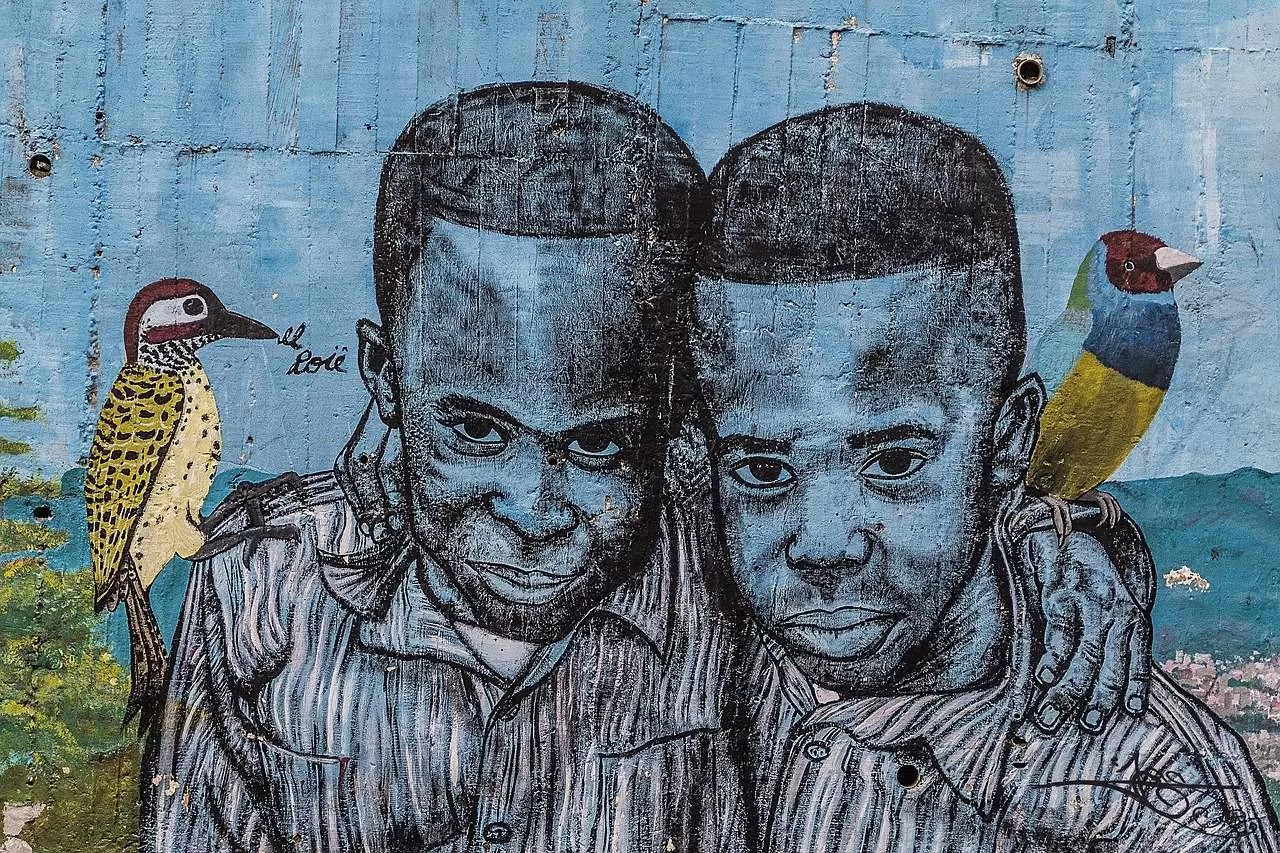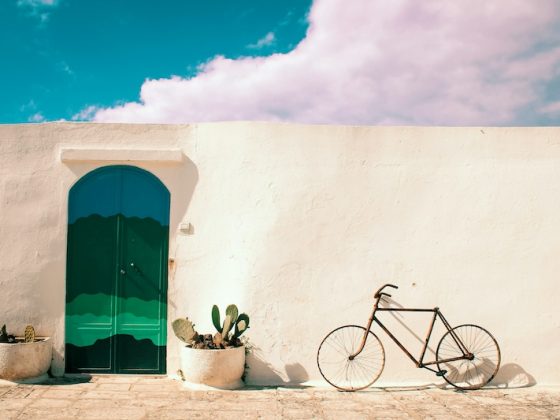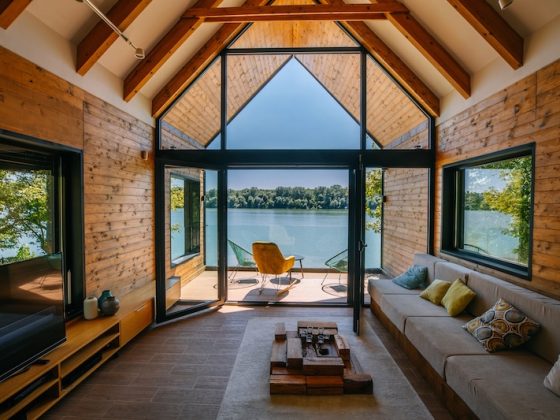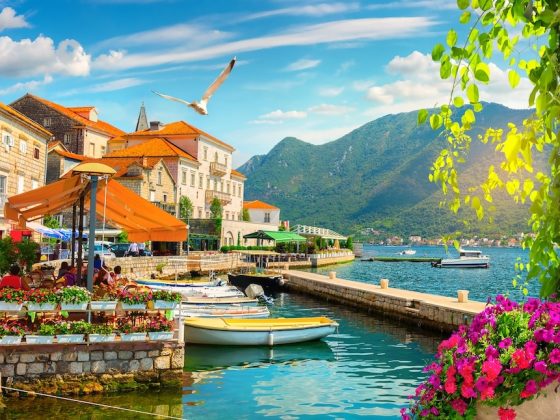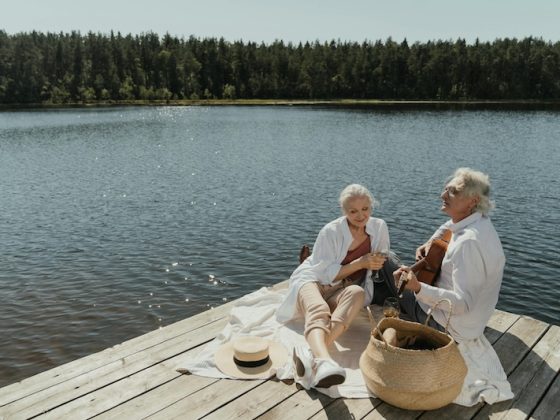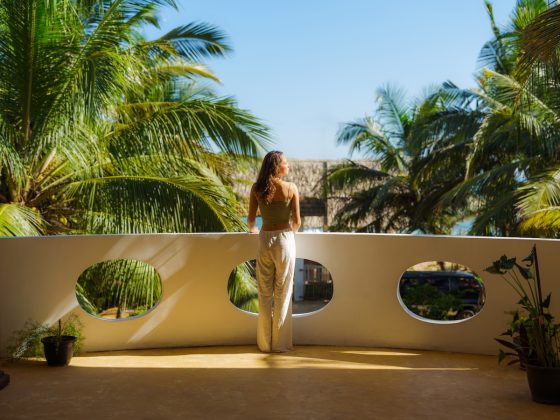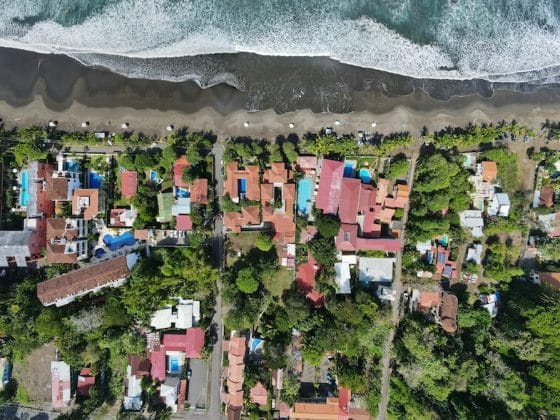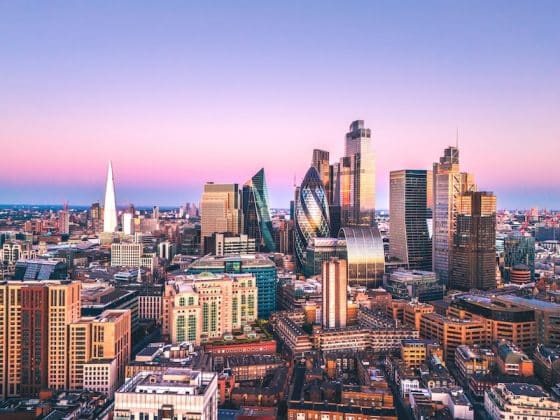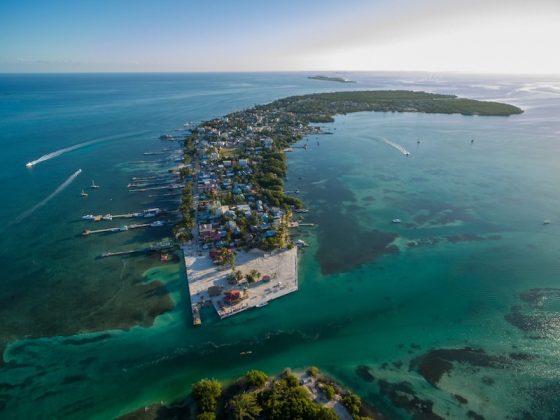Having lived the ”colonial life” for two years in Cartagena, I was uncertain what to expect from her ”older sister” Santa Marta. While the Spanish had made other attempts at establishing settlements along the Caribbean coast, Santa Marta is considered the oldest city in Colombia and the second oldest in South America. Founded on the 29th of July 1525 by Rodrigo Galvan De Bastidas, the city is sometimes known as ” the City of Magic” but personally, I and my travelling companions found it rather lacklustre. Nevertheless, this area of Colombia is worth exploring.
Arriving at the rather tiny and outdated airport after a late afternoon rain, one might have expected the stifling humidity that would have greeted you if your destination had been Cartagena. Instead, the air was fresh and disembarking from the plane one could not help notice the verdant, rolling hills of the Sierra Nevada mountains. Santa Marta’s geographical location, bounded by the Caribbean Sea on one side and the Sierra Nevada Mountains on the other, places it in close proximity to numerous microclimates, making it one of the most biodiverse cities in the world.
Driving into the city, from the airport, you will experience what a typical Colombian coastal city is like, ”warts and all”. In Cartagena, leaving the airport, you skirt the barrio ”Crespo” but you can pass all of your vacation time in the Old City or Bocagrande without ever knowing the ”real” city.
The historic centre of Santa Marta can not hold a candle to Cartagena. Most of the vestiges of colonial Colombia have disappeared. For the most part, what remains are numerous Republican homes in various states of repair. Santa Marta is a renovation waiting to happen and for those keen on owning a more affordable ”classic style” Colombian home, opportunities abound.
Within a few blocks of each other are the most important buildings to view. The Customs House – Casa de la Aduana, is considered to be the first architecturally constructed building in all of South America. This is where the body of the Liberator, Simon Bolivar was laid out after his death in 1830. The Palace Town Hall was constructed in 1530 and initially, the first floor functioned as a prison and the upper floors served as offices for the local government. The locals consider the Cathedral of Santa Marta to be the oldest basilica built in Latin America. Its construction began in 1531 but due to earthquakes, floodings and more than 20 sackings of the town by pirates, it was not finished until 1766.
One can not truly know a city until you have walked it in the wee hours of the morning, at midday and after dark. The boardwalk of the city centre, at times during the city’s history, must have been spectacular with beautiful Republican homes lining the roadway facing the beach. Santa Marta has an excellent natural harbour and this led it to be a very successful customs port for many, many years. Now freighters dock to unload containers of goods (probably from China) or to take on loads of coal, trucked in from the giant Cerrejon mine.
My morning stroll along the boardwalk/Malecon was relatively quiet while I observed some of the locals taking an early morning swim and some individuals, apparently transient, who may have spent their night soaking in the previous evening’s lunar libations. I couldn’t help thinking that this would not be a beach where I would want to bath. With the proximity to the port, it appeared to me that the sand was mixed with coal and had a sandy black appearance.
As I walked some of the side streets looking for a home in need of some TLC, I couldn’t help notice the acrid smell of urine, probably from the ”wee hours” of the morning as well. Nonetheless, it is fascinating observing a city as it peels away from its evening’s cloak.
About 15 minutes from the city centre is the suburb of Mamatoco. If you have any interest in the history of South America and its liberation from the chains of Spanish colonialism, then ”la Quinta de San Pedro Alejandrino is a place that you must visit. This villa was founded in the early 1600s and was dedicated to the production and processing of sugar cane. In December 1830, Simon Bolivar came to rest at the villa by invitation of the owner. Unfortunately, he passed away on the 17th of December and later was buried in the Basilica of Santa Marta (he is now interred in Caracas, Venezuela). The government of Colombia has restored the original buildings and constructed a museum and botanical garden in this beautiful setting dedicated to the Liberator.
If you like outdoor activities then the options in and around Santa Marta are plentiful and the scenery spectacular. About 10 minutes from the city centre by taxi, about 10,000 COP, you will find El Rodadero. This beach resort reminded me a little of Waikiki in the 1980s as I explored some of the back streets away from the ocean’s edge. Since the 1960’s this location has been one of the popular Colombian holiday resorts and the beach presents itself as a fabulous carnival of life. There was not an obvious presence of expats in and around the beach although some of the new construction further up the beach seemed to be attracting the interest of foreigners. There are two aquariums in El Rodadero and it is only a 15-minute ride by launch to ”Playa Blanca” beach.
Taganga located about the same distance to the East of Santa Marta is a small ”authentic” fishing village. As you descend the winding mountain road towards the village, the views from the lookouts are stunningly beautiful. If life was a movie set then what you would find in the village would be charming and quaint. Five minutes after being dropped off by our driver we grabbed another taxi back to the city. The village was crowded, the tiny beach filthy and smelly and we had no appetite to sit in a restaurant at the water’s edge and try to enjoy a pleasant lunch.
That being said, if you like to dive, then from this location you will find excellent sites and there are probably 5 or 6 dive shops as you enter the village. If you want to find a much more pleasant beach then you can walk about 25 minutes along the water’s edge to Playa Grande. Just make certain that you have insect repellant, sunscreen, comfortable shoes and a bottle of water. There is an adventure to be found in Taganga. It all depends on who you are and what you are looking for. Follow the story of Park Dunn-Morrison and his ”Thrill-Packed Overnight in the Sierra Nevadas” which began in Taganga.
A little under an hour from Santa Marta, up into the Sierra Nevadas, you will find some of the best coffee in Colombia. Minca is a small village where people say some of the first coffee plantations began. Minca was also the site of the first hydroelectric plant in Colombia and was the first location in the country to have electrical power. It is best to visit this area with someone who is familiar with the territory. Bird watching is becoming an increasingly popular activity in this part of the Sierra Nevadas.
The Sierra Nevada of Santa Marta and Tayrona National Parks make up the 675,000 hectares (approximately 1,687,500 acres) UNESCO Biosphere Reserve (1979). Stretching from the Caribbean Sea with its fine coral reefs, amazing beaches, bays and inlets the parks reach up to a height of 5,775 m2 or almost 19,000 feet above sea level.
Tayrona is spectacular and if you are the ”outdoorsy” type, this alone is worth the trip to Santa Marta. One thing that shocked me was the entrance fee. It was not that it was exorbitant but it was the fact that foreigners were being charged 3 times the price as the locals. The Colombians that I was travelling with felt this was justified as we were making use of their natural patrimony. Now, I am not the most worldly of travellers, perhaps 31 US states, 8 Canadian provinces and 1 territory and another 23 countries but I can not ever remember being charged extra for being a foreigner. Maybe the Canadian and American Park Services should take note.
Within Tayrona is the ”Lost City” which is considered the most important monument and archaeological site in the Sierra Nevadas. Generally, this is a 5-day hike, in and out to the site and requires at least a medium level of fitness. There is a high level of awareness of sustainable tourism in this part of Colombia that incorporates ecotourism and ethnotourism (indigenous) in order to preserve and sustain the Biosphere Reserve. Before you hike into these backcountry areas you should check on the vaccination requirements and you should also make use of an experienced guide.
Santa Marta and the Sierra Nevadas offer a wide range of touristic activities. There is something for just about everyone. Definitely include it in your travel plans.
Contact Author
"*" indicates required fields
Stay Ahead on Every Adventure!
Stay updated with the World News on Escape Artist. Get all the travel news, international destinations, expat living, moving abroad, Lifestyle Tips, and digital nomad opportunities. Your next journey starts here—don’t miss a moment! Subscribe Now!
